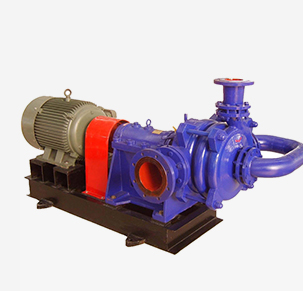Latvian
- Afrikaans
- Albanian
- Amharic
- Arabic
- Armenian
- Azerbaijani
- Basque
- Belarusian
- Bengali
- Bosnian
- Bulgarian
- Catalan
- Cebuano
- Corsican
- Croatian
- Czech
- Danish
- Dutch
- English
- Esperanto
- Estonian
- Finnish
- French
- Frisian
- Galician
- Georgian
- German
- Greek
- Gujarati
- Haitian Creole
- hausa
- hawaiian
- Hebrew
- Hindi
- Miao
- Hungarian
- Icelandic
- igbo
- Indonesian
- irish
- Italian
- Japanese
- Javanese
- Kannada
- kazakh
- Khmer
- Rwandese
- Korean
- Kurdish
- Kyrgyz
- Lao
- Latin
- Latvian
- Lithuanian
- Luxembourgish
- Macedonian
- Malgashi
- Malay
- Malayalam
- Maltese
- Maori
- Marathi
- Mongolian
- Myanmar
- Nepali
- Norwegian
- Norwegian
- Occitan
- Pashto
- Persian
- Polish
- Portuguese
- Punjabi
- Romanian
- Russian
- Samoan
- Scottish Gaelic
- Serbian
- Sesotho
- Shona
- Sindhi
- Sinhala
- Slovak
- Slovenian
- Somali
- Spanish
- Sundanese
- Swahili
- Swedish
- Tagalog
- Tajik
- Tamil
- Tatar
- Telugu
- Thai
- Turkish
- Turkmen
- Ukrainian
- Urdu
- Uighur
- Uzbek
- Vietnamese
- Welsh
- Bantu
- Yiddish
- Yoruba
- Zulu
Telephone: +86 13120555503
Email: frank@cypump.com
Aug . 07, 2024 17:55 Back to list
Understanding Sump Pumps for Efficient Sewage Management and Home Flood Prevention Strategies
Understanding Sump Pumps in Sewage Management
In the world of home maintenance and plumbing, sump pumps play a crucial role, especially in managing sewage and waste water. This often-overlooked appliance is essential for homeowners in areas prone to flooding or possessing high water tables. Understanding the function, importance, and maintenance of sump pumps can lead to a better-managed home environment and increased property value.
What is a Sump Pump?
A sump pump is a device installed in a sump pit, typically located in the basement or crawl space of a home. Its primary purpose is to remove accumulated water, preventing flooding or water damage. While many associate sump pumps with groundwater management, they also play a vital role in sewage management. Certain sump pumps, known as sewage pumps, are specifically designed to handle wastewater from bathrooms, laundry facilities, and kitchens.
How Does a Sump Pump Work?
Sump pumps operate using a simple mechanism. When water accumulates in the sump pit, a float switch activates the pump. The pump then removes water through discharge piping, directing it away from the home’s foundation. In sewage applications, the pump can facilitate the movement of waste material to the main sewer line, effectively preventing clogs and backups.
Most sump pumps are powered by electricity and can be either pedestal or submersible types. Pedestal pumps sit above the sump pit and feature a long shaft with a motor connected to the pump below. Submersible pumps, on the other hand, are designed to operate while submerged in water, making them ideal for environments with significant water accumulation.
Importance of Sump Pumps in Sewage Management
sump pump sewage

1. Flood Prevention Heavy rainfall or snowmelt can lead to basement flooding. Sump pumps effectively mitigate this risk by expelling excess water before it can gather and cause damage.
2. Sewage Backup Prevention Sewage pumps can prevent sewage from backing up into the home, which can lead to unsanitary conditions and costly repairs. By efficiently moving waste away from the residence, they protect family health and preserve structural integrity.
3. Property Value Protection Homes without adequate flood and sewage management systems can suffer significant depreciation in value. By investing in a sump pump, homeowners not only protect their property but also enhance its appeal to potential buyers.
Maintenance of Sump Pumps
To ensure a sump pump operates effectively, regular maintenance is crucial. Homeowners should conduct periodic checks to ensure the pump is free of debris, the float switch is functioning correctly, and the discharge line is clear. Additionally, it's wise to test the pump periodically by pouring water into the sump pit and observing whether the pump activates.
In environments where the local electricity supply is unreliable, installing a battery backup system is advisable. This ensures that even during power outages, the sump pump continues to function, providing peace of mind during severe weather events.
Conclusion
Sump pumps are vital components in managing sewage and flood conditions within homes. They play a dual role by protecting against both groundwater and wastewater issues. Awareness of how these pumps work, their benefits, and the importance of regular maintenance can help homeowners safeguard their properties effectively. Investing in a reliable sump pump not only enhances safety but also contributes to the overall health and longevity of a home. For those living in flood-prone or high-water-table areas, a sump pump is an essential safeguard against nature’s unpredictability.
-
Horizontal Split Case Pump with GPT-4 Turbo | High Efficiency
NewsAug.01,2025
-
ISG Series Pipeline Pump - Chi Yuan Pumps | High Efficiency, Durable Design
NewsAug.01,2025
-
Advanced Flue Gas Desulfurization Pump with GPT-4 Turbo | Durable & Efficient
NewsJul.31,2025
-
ISG Series Vertical Pipeline Pump - Chi Yuan Pumps | Advanced Hydraulic Design&Durable Construction
NewsJul.31,2025
-
ISG Series Vertical Pipeline Pump - Chi Yuan Pumps | Energy Efficient & Low Noise
NewsJul.31,2025
-
pipeline pump - Chi Yuan Pumps Co., LTD.|High Efficiency&Low Noise
NewsJul.31,2025










